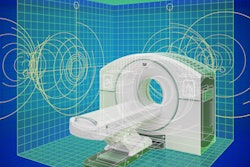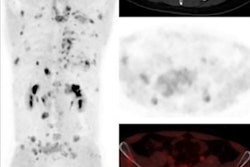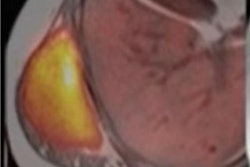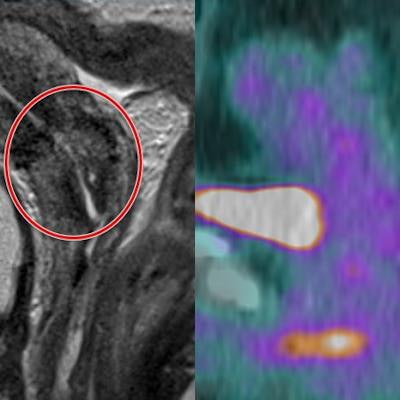
The combination of PET/CT and MRI response assessment after chemoradiotherapy in cases of locally advanced cervical carcinoma (LACC) is a more accurate predictor of patient outcome than either modality alone, U.K. researchers have reported in a new award-winning study.
"This information could be used to guide personalized, risk-adapted patient follow-up," noted Dr. Simran Singh Dhesi and colleagues from the Leeds Teaching Hospitals NHS Trust in an e-poster that received a certificate of merit award at ECR 2023.
The researchers looked at LACC patients who received curative-intent conformal radiation therapy (CRT) at a single hospital between 2014 and 2021. They collected data on patient demographics, clinical history, staging, treatment details, and follow-up information, including progression-free survival and overall survival.
PET/CT and MRI scans were conducted using standardized protocols, and image interpretation was performed by a doctor with two years of experience, under the supervision of a dual-certified radiologist and nuclear medicine physician and a radiologist with a special interest in gynaecology with over 20 years of experience in MRI, respectively. Post-treatment images were compared with baseline studies and scored on a qualitative five-point scale.
 33-year-old LACC patient with stage 2B disease, node negative. MRI was performed 86 days after completion of conformal radiation therapy. Score grade 1 was recorded, indicating complete response. All images courtesy of Prof. Andy Scarsbrook.
33-year-old LACC patient with stage 2B disease, node negative. MRI was performed 86 days after completion of conformal radiation therapy. Score grade 1 was recorded, indicating complete response. All images courtesy of Prof. Andy Scarsbrook. FDG-PET/CT in the same patient shows primary tumor, SUVmax 11.5. FDG-PET/CT scan performed 94 days after completion of CRT gave score of grade 4, indicating patient metabolic response.
FDG-PET/CT in the same patient shows primary tumor, SUVmax 11.5. FDG-PET/CT scan performed 94 days after completion of CRT gave score of grade 4, indicating patient metabolic response. MRI performed five months later showed local relapse. PET/CT confirmed this and showed no distant disease. Patient underwent salvage pelvic exenteration and was disease-free two years later.
MRI performed five months later showed local relapse. PET/CT confirmed this and showed no distant disease. Patient underwent salvage pelvic exenteration and was disease-free two years later.A total of 95 patients were included in the study. Of these, 21 (22%) had evidence of persistent local and/or nodal disease after CRT. The diagnostic performance of MRI (accuracy 77%, positive predictive value [PPV] 29%, negative predictive value [NPV] 84%) and PET/CT (accuracy 77%, PPV 27%, NPV 94%) was similar.
When the two modalities were used in combination, however, there was an improvement in NPV (100%), although this did not reach statistical significance, according to the authors.
Kaplan-Meier analysis demonstrated that there was no significant difference in progression-free survival (PFS) or overall survival (OS) between responders and non-responders when the modalities were used in isolation (PET/CT: PFS p = 0.06, OS p = 0.321; MRI: PFS p = 0.133, OS p = 0.966). Combined assessment allowed for statistically significant prediction of PFS (p = 0.036) but not OS (p = 0.288)
"It should be noted that this study was retrospective and conducted at a single centre, with a relatively small sample size," the researchers wrote. "Additionally, due to the COVID-19 pandemic, some patients who completed treatment after March 2020 had delayed response assessment scans."
Looking to the future
A growing body of literature has reported that volume-based metrics derived from FDG PET/CT may have prognostic value, explained Prof. Andy Scarsbrook, consultant radiologist and nuclear medicine physician at St James's University Hospital and professor of radiology at the University of Leeds.
Additional quantitative features extracted from FDG-PET/CT may help to identify patients at greater risk of relapse, and there is also emerging evidence that radiomic analysis of diffusion-weighted MRI may help improve the accuracy of clinical outcome prediction in patients with LACC.
 40-year-old LACC patient with stage B disease, node negative. Indeterminate residual T2-weighted signal change post CRT -- grade 3 (moderate response).
40-year-old LACC patient with stage B disease, node negative. Indeterminate residual T2-weighted signal change post CRT -- grade 3 (moderate response).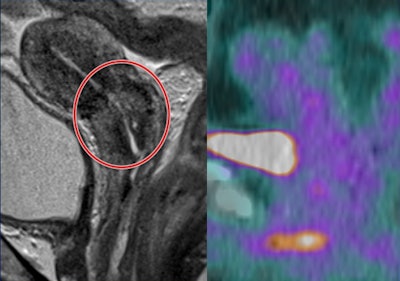 Indeterminate residual T2-weighted signal change post CRT -- grade 3. No corresponding residual metabolic activity on PET/CT -- grade 1 (complete metabolic response). Patient remains disease-free three years later.
Indeterminate residual T2-weighted signal change post CRT -- grade 3. No corresponding residual metabolic activity on PET/CT -- grade 1 (complete metabolic response). Patient remains disease-free three years later."Our current work is focused on evaluating whether extracting novel (quantitative) features -- including metabolic tumour volume and standardized uptake value metrics derived from FDG-PET/CT as well as radiomic features along with quantitative feature analysis of MRI -- has a greater ability to predict patient outcome when compared to qualitative analysis," he told AuntMinnieEurope.com.
A prior Australian study (n = 362) in patients with head and neck cancer reported the safety and cost-effectiveness of a less intensive clinical follow-up strategy in patients with complete metabolic response on FDG-PET/CT post chemoradiotherapy with reduction in frequency of follow-up from three to six months with no apparent clinical detriment and reduced costs (see Oral Oncol 2015; 51: 529–535). A similar study has not been reported in LACC patients, he explained.
"We believe that optimizing MRI and PET/CT response assessment criteria may help guide an individualized approach to follow-up in LACC," added Scarsbrook. "Future prospective evaluation of the safety and efficacy of risk-adapted follow-up based on combined MRI and PET/CT response scoring warrants further investigation."
To view the whole ECR 2023 poster and learn more about the Leeds group's full range of findings, go to the EPOS section of the congress organizers' website.
The co-authors of the ECR e-poster were Prof. Andy Scarsbrook, Dr. Russell Frood, Dr. Siddhant Muzumdar, Dr. Sarah Swift, and Dr. Rachel Cooper.





